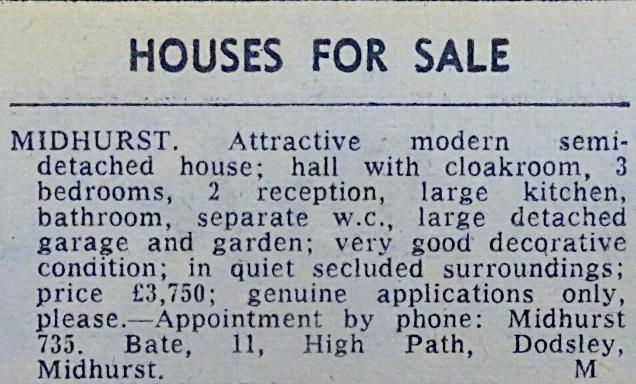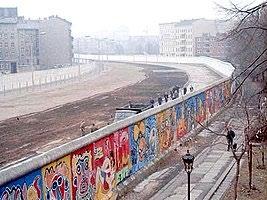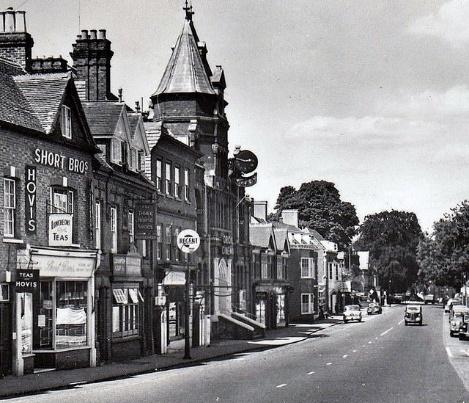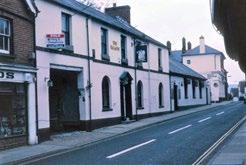
20 minute read
Society founders
The Society Founders: Past Reports
From Past Midhurst Society publications
Advertisement
‘was a founder member of The Midhurst Society and its first chairman. She was also editor of our magazine for many years.
Frances was born in Calcutta and started riding at the age of two. She grew up on the northeast frontier of India at Simla. The family kept their own cattle and their property bordered jungle frequented by tigers and monkeys who often ventured into their garden at night. Whilst Frances' mother developed a career of designing clothes for the Court in India, by the age of eight Frances couldn't even read or write, despite having private tutors. So she was despatched back to England where she grew up to become head of film and production at the Central Office of Information, living in Pall Mall and South Audley Street.
When her mother returned to England, Frances spent much of her time at Buddington House, the family home for nearly 30 years. France's closest friend was Alice Lascelles ……. of Woolbeding House and they spent many happy hours riding and hunting. Alice founded The Midhurst Society in 1960 and, in Frances' words, 'Issued a royal command for me to take over the chair' – which she did for twelve years. In 1988 she published – and funded herself – the first Midhurst Society Magazine and continued for fourteen years as Editor. [She also published an interesting history of Midhurst with the Society (Johnson- Davies, Frances. Midhurst - A Brief History, Midhurst Society, 1996)]

Frances grew up with a passion for animals that has continued to this day; in fact, it is such a passion that she refuses to leave Telegraph Hill in spite of ill health. With her are three rescue horses and six sheep, bred from her original flock of 50. We have much to thank Frances for, as can be seen when browsing through the archives, and not least for her commitment to the Society for over forty years.’
Frances died in 2008 and is buried in the Midhurst Cemetery.
Tom Merrit (Midhurst Magazine July 2003)
‘In the Spring of 1999 Miss Alice L Lascelles paid tribute to Tom Merrit, who had died recently. “Without him the Midhurst Society would have had a very shaky start if, indeed, it had started at all. His knowledge and interest in the town and neighbourhood led to the idea of forming the Midhurst Society just when the town was becoming popular and rapidly expanding. He was one of those rare people who did appreciate and love the old town but knew that it must not be kept in mothballs. He knew that change and development were necessary to keep the place alive. The Midhurst Society's loss, and mine, were very great when he retired”
Miss Alice Lascelles
Alice was born in Kensington, London on 4 April 1914 to Edward Charles Ponsonby Lascelles and Leila Winifred Leonor KennettBarrington.

For much of her life she lived in the Lascelles’ Woolbeding House, just NW of Midhurst.
According to a Midhurst Society Newsletter Issue No.1 May 2001, Her obituary states she:
‘was a very private person, her influence for good in the community was widespread. Nearly always unobtrusive in her approach she gave support to those who, for one reason or another, were unable to help themselves. She was effective, too, in warning against measures she believed would be harmful. The fencing of Woolbeding Common was an example.
Once part of the family estate, Woolbeding Common had a special place in Miss Lascelles’ affections. She was concerned that fencing would change the character of this beautiful open space and that people would then be restricted in their use of it.
The National Trust’s plan to graze cattle on the common brought anxiety about the comfort and safety of dogs and walkers, particularly dog-walkers. She knew that dogs and cattle are curious about each other and a clash between animals and an intervening owner had been fatal elsewhere. Horse-riders, too, could be at risk. She worried that animals and people could be trapped within fences by the fires that regularly occur in summer months. Changes in management were inevitable for a number of reasons. She knew that; but hoped the result would not deprive the common of its principal feature – an open and peaceful natural reserve.
Although the common was often in her thoughts in recent years, Alice Lascalles had other interests, among them the arts, literature and literary figures. Many of the Nation’s arts, Royal and political figures had, at one time or another, been entertained in her home in Woolbeding.
She served on a number of local councils and committees, including the Midhurst Society which she founded with others in the 1960s. She was its President for the rest of the century.
Never serious for long, it amused her to explain to strangers that it was “Lascelles to rhyme with tassels” - a smiling quip for the illustrious name.
Alice Leila Lascelles died on 2nd May 2001, aged 87. She was the last of the Lascelles to live in the House at Woolbeding.’ By ‘F J-D, The Midhurst Society.
[We could find no memorial. Eds]
Woolbeding House is a pretty Georgian house set in the rolling Sussex countryside. It was given to the National Trust in 1957.
In the 1970s Woolbeding House and gardens were leased to Simon Sainsbury, of the supermarket family, who with his partner Stewart Grimshaw and help from landscape designers, laid out the beautiful gardens that can be seen there today.

The gardens are open to visitors, but not the house. When Simon died in 2006 the lease passed to Stewart.
Over 60 Years: Looking back
Reflections compiled by Harvey Tordoff - with some help by Peter Sydenham
In 1960 the United Kingdom was emerging from the hardships of the Second World War. Food rationing had been lifted in the mid1950s and as Harold MacMillan told us: 'we'd never had it so good'. (National Archives, UK)
A sliced loaf of bread cost 5p; 20 cigarettes cost 25p. Bobby Charlton, along with other top footballers, was paid £50 per week. (Local newspaper advertisement of 1960.) dominated the headlines and we applied for membership in 1963. General de Gaulle said 'NON'. We applied again in 1967. The good General, who had benefited from our hospitality and protection during the war, and whose country we helped liberate, again said 'NON'. It wasn't until 1973 that we were admitted, by which time we had demonstrated our love for all things decimal by abandoning shillings and pence. Joining a single European currency proved to be a step too far and we hung on to our pound Sterling.

In 1960 The Everly Brothers' 'Cathy's Clown' was the top-selling record. Wolves beat Blackburn 3-0 in the FA Cup Final. England cricketers, captained by Colin Cowdray, enjoyed series victories against the West Indies and South Africa. England won rugby union's Five Nations Championship. Neale Fraser and Maria Bueno won the singles titles at Wimbledon. Jack Brabham was F1 Champion. A new type of television programme appeared: Coronation Street.
The Swinging Sixties were just about to start! Did they ever reach Midhurst? We uncovered no evidence, although in 1967 Mick Jagger and Keith Richards (Rolling Stones) appeared before magistrates in Chichester on drug charges. Keith didn't bear a grudge. In 2007 he marched through the streets of Chichester protesting proposed closure of services at St Richard's Hospital.
There were clouds on the horizon. The
The recently-formed Common Market hostility between the USSR and the West
‘Death Strip’ part of Berlin Wall in 1986. It
came down in 1989. (Wikipedia)

became clear for all to see with construction of the Berlin Wall in 1961.
The Cuban missile crisis had us all fearful and spellbound over the following year. The threat of nuclear war hung over us and our faith in politicians took a dive with the Profumo affair in 1963. All the while those menacing newfangled satellites seemed to be watching everything from their mysterious orbits; but of course, satellites would never make a difference to our everyday lives!
Midhurst had seen little change in the first half of the 20th century. After the Second World War many houses still did not have electricity or running water and, therefore, had no indoor toilets or a dedicated bathroom.
The telephone switchboard in town lasted until 1968. It was not until 1985 that the first UK mobile phone call was made. Before then it was a trip to the phone box for most people. You can amuse your grandchildren by telling them how you once went 40 years without an internet connection! And that there were no laptop computers until the 1980s; a portable one weighed in at 27 pounds!
The population had remained stable at just under 2,000, but in the second half of the century it started to rise steadily to approximately 5,000. Older residents will remember a small compact town surrounded by trees and fields, but the demand for new houses saw a steady urban spread, particularly towards the south and west. Concern was expressed not just at the rate of expansion, but also at the apparent fall in standards of the new buildings.
In response The Midhurst Society was created in 1960 with the following aims:
(i) To stimulate public interest in the town and surrounding area of benefit and in the existence of the Society.
(ii) To promote high standards of planning and architecture in the area of benefit.
(iii) To secure the preservation, protection, development and improvement of features of historic or public interest in the area of benefit. Notwithstanding the name, the area of benefit (or influence) encompassed surrounding villages. (Midhurst as an area or place has many different definitions – by post code; by parish; by Town Council domain, and more.)
The following details some of the changes in Midhurst that The Society became involved with. The King Edward VII Sanatorium, opened to great fanfare in 1906, became a victim of its own success. TB was being brought under control with the coming of antibiotics, so 'our Sani' didn't have enough paying patients. In 1964 the decision was made to turn it into a general hospital, attracting the support of the whole town.
(From Sani’s history by S E Large)

New developments took place. In 1973, Queen Elizabeth signed the Visitors book after opening the new Midhurst Medical Research Institute there.
For a while it looked as though the changes had been successful, but surgical cases spent far less time in hospital than the former TB patients, and bed occupancy was always a problem. When complete closure was first mooted the town was stunned. MP Andrew Tyrie raised the matter in Parliament but couldn't prevent closure in 2006.
The Midhurst Society was most anxious about development proposals there, fearing that new builds would take precedence and excuses would eventually be found to demolish the main building and chapel. However, although permission was given for approximately 400 housing units in total, the sanatorium survives, sympathetically converted into apartments.
Midhurst Cottage (or Community) Hospital closed its Bailey Unit in 2018 and now the nearest hospital bed was in Chichester, but the Riverbank Medical Centre is currently being considered for the creation of a Community Hub for the region. It is hoped that the hub will incorporate the Hospital and the empty building known as Rotherfield Mews.
Ancient rural buildings across the land were in need of protection. In many instances their structures were in dire condition and were being destroyed to make way for modern ones. The Weald and Downland Living Museum celebrated its 50th anniversary this year. Enthusiasts started it to preserve, and bring to life buildings not finding sustaining uses where they originally stood. The Museum brings together a selection of such gems from the SE of England and reinstates them on site.
Schools also changed. What would the founder of the first school, Gilbert Hannam, have made of it? In 1672, for 12 poor boys, Hannam opened a school above the building commonly known as the Old Market Hall.
Over the years that school was relocated, and grew, until in 1966 the Grammar School (as it had become) merged with the nearby Secondary Modern.
Among its former students were Bertie (HG) Wells and Sir Charles Lyell, father of modern geology. It was Lyell's explanation of the slow changes in the earth over aeons that gave Charles Darwin the confidence to develop his theory of evolution. Prior to that, the wisdom of the day was that the earth was only a few thousand years old and so near-simultaneous creation of the species was the only possibility.
The current Midhurst Rother Academy, incorporating the Grammar School and the Intermediary School, was created in 2009 with

the stated aim of 'bringing out the best' in its students. At a cost of £31 million a new building was opened in 2012 on the River Site Campus. The official opening was performed by Lord Adonis in 2013. Student numbers have increased from the original 12 poor boys to approximately 1500 students.
Other schools in the area have had mixed fortunes. Bepton and Heyshott schools had already been closed by 1960. The Old National School, at the edge of Midhurst Common opposite the Half Moon, was in use for over 100 years but it was closed in 1972 when the building (still recognisable today) was converted into housing, and was replaced by the new Midhurst Primary School in Ashfield Road.

(Gravelroots)
The West Lavington School managed to survive for 150 years before it, too, closed in 2008: it is now home to Little Laura's Nursery. At the end of 2019 Stedham Primary School was under threat of closure but was reprieved after a spirited protest campaign.
In Easebourne, where there had once been a 'tuppenny school', a new intermediate school was built in 1970, and although this closed in 2008 the new Easebourne CE Primary School continues to thrive.
Of course, some things never change, do they? Yes, they do! Even the Cowdray Ruins, the scene we all identify with Midhurst, has entered a new phase of life. The Cowdray Heritage Trust was created to raise funds for the restoration and stabilisation of the Ruins, which were opened to the public in 2007 with the help of Lottery grants and public donations. Safety concerns closed the site
again in 2019, and we await news of the Trust's plans for the future. (Bing) The Orion cinema in North Street (built in 1881 as the Midhurst Public Hall) had its last showing in 1962 with the film Twice Around the Daffodils. It was demolished in 1966 to that now houses Tesco (previously the International Stores and Gateway). Midhurst lost a grand ornate building, of the late Victorian era, that today could well have become a highlight of local architecture that had been returned to its original purpose; as an opulent town hall with presence and pride of place. In 1960 most people shopped locally, and shops. Before the refrigerator became a household necessity, daily shopping was the norm, but increasing affluence and mobility signalled the advent of supermarkets. In 1992 Budgens of Billingshurst expressed an interest in building a supermarket on the site of the old bus garage in North Street, which came idea of a store behind The Angel. In 1995 two quite different planning applications were made for the White City site: one (a renewal) for sheltered accommodation; the other from Budgens for a supermarket. The Midhurst Society favoured the sheltered accommodation, but it was a store for Budgens that was built, complete with shoppers' car effect on other shops in town, and although we

still have independent shops with character there is a growing presence of establishments that don't have internet competition:
make way for a bland supermarket building
Midhurst was well-served with independent
to naught. The Portsea Co-op explored the park. Not surprisingly, there was a knock-on hairdressers, charity shops, cafes.
(Geograph)

In 1970 a new fire station was built in New Road, providing welcome relief from the inadequate premises in The Wharf. However, one of the biggest local developments was the construction in 1980 of the Grange Community Centre – see this rear cover. It was a joint venture between The Midhurst and District Community Association (an independent voluntary organisation) and the West Sussex County Council. It's aims were to promote the spirit of community; to provide opportunities for sport, leisure and community involvement; and to provide for the elderly, for people with handicaps, and for their special needs.
Was it a good investment? By 2014 the building was looking distinctly tired and it was demolished, to be replaced by a new Leisure Centre next door. The original site was boarded up – and has remained so ever since.

Social habits were changing too. The population was increasing but the number of pubs shrank. The Three Horseshoes (North Street) is now home to Pizza Express. The Egmont Arms (Rumbolds Hill), shown here, and The Crown (Edinburgh Square) were converted, sympathetically, into residential properties.
The demand for housing was unstoppable. Some of the big old houses were demolished or converted, estates and gardens were built on, with only the names remaining to remind us of their past use: Guillards Oak, Taylor's Field, Oakhurst, Elmleigh, Heatherwood, Heathfield Park, Holmbush, Close Walk Woods.
On the corner of Petersfield Road and Bepton Road the showroom and garage, belonging to T H Russell, were pulled down and replaced with a residential development called Russell Court. The Dairy gave way to The Old Dairy (residential). On the opposite side of Petersfield Road, St Margaret's Convent was redeveloped, being named the Montagues. Prices there in 2015 started at £350,000 for a 3-bedroom house; a good deal greater than the house in the advert shown above for 1960. By this time the description 'affordable housing' had made its appearance and was included in the Convent site proposals.
The closure of the railway stations in Midhurst had pushed all transport onto the roads. The growth in population, the increase in ownership of private cars, the perceived need to travel further for shopping, all combined to put pressure on roads and car parks. Two major roads (the A286 north/south and the A272 east/west) converged and shared the same restricted space between North Mill Bridge and the Rumbolds Hill mini- roundabout. Ronald Boxall (in A Midhurst Lad) recalls dribbling an old tennis ball down the middle of North Street “and the only thing I had to avoid were the numerous deposits of horse manure”. Nowadays traffic jams are common, and the exhaust emissions constitute a health hazard. The most obvious partial solution would be a by-pass to the north-west of the town, allowing east/west traffic to avoid North Street completely. Land ownership, funding and political will have so far provided insurmountable barriers, although a solution should not prove to be beyond the wit of man.
Fortunately, the special character of the old part of Midhurst had long-been recognised. Many individual properties were given Listed Building status, and in 1974 the Midhurst Conservation Area was established. This was revised in 2000 but with the advent of the South Downs National Park in 2011 (with Midhurst at its heart) conservation and protection entered a new phase. In drafting proposals for a newly-defined Conservation Area in 2012 the SDNPA commented: ‘Midhurst is remarkable for the quality and preservation of its historic environment.’ Perhaps unsurprisingly, the SDNPA chose Midhurst for its base. In earlier times the Society was not in favour of there being a national park for it would bring in greater use of the area to its detriment.
The old town is still largely as it was 60 years back: except it is now smarter with new paving and street furniture. To think, 80 years back at this intersection one saw and very much heard the ongoing noise of tanks, trucks, guns, troops and more as they made their way down South Road to be part of the D-Day landings of Second World War!
Through all of this the Midhurst Society quietly fought for what it believed to be in the best interests of the town. We have a lot to thank those unsung volunteers for; and the present members of the Committee feel privileged to have been chosen to carry on this tremendously important work.

(Midhurst Town Council)
Looking Back 60 Years: Some 1961 events
January. The farthing coin, used since the 13th century, ceased to be legal tender. In the 17th century Midhurst minted its own farthing!
February. The Sunday Telegraph newspaper started.
March. First use of Identikit facial composite system to identify a murderer. Black and white £5 note ceased to be used. First Beatles performance.
April. Jaguar E-type launched as 2-seater with top speed of 150mph.
May. Betting shops allowed. Guilford Cathedral consecrated. The “Forgotten Prisoners” article sets foundation of Amnesty International.
July. Suicide decriminalised in England and Wales.
August. UK applies for EEC membership. ‘Lady Chatterley’ play opened in London.
September. First Mothercare shop opened.
October. Acker Bilk’s clarinet piece, Stranger on the Shore, released. First programme of Songs of Praise broadcast. Is still runs today; one programme was made in Easebourne.
November. First British winner of Miss World Beauty pageant.
December. Birth control pills available in the NHS. Tanganyika gains independence from Britain.
Vision for Midhurst, cast in July
2003.
Taken from The Midhurst Society Newsletter of July 2003.
“Last October Country Life declared Midhurst to be the Second-Best Place in England to live. However, by 2012, unless we protect our heritage, Midhurst might be: • The Worst Place to live • gridlocked by traffic • immobilised by parked cars • empty of shoppers • destitute of affordable housing • minus a local labour force • devoid of a police presence • terrorised by young vandals • without tourists or visitors • with an aging population with negative equity” --------------------------------------------
Spring 1990.
Letter from Lady Bonham Carter: -
“I enclose my cheque for £5 to cover my subscription to the Midhurst Society. I think the magazine is now quite excellent.” The Committee is pleased to announce that membership has passed 400.
We are again back in business!
In Summer 1991 ‘At the Annual General Meeting held on 10 April, in response to the announcement that the Society has been given a selection of slides of Midhurst, Mr Douglas Rudwick suggested that his son, David, might give a talk illustrated with these slides.’ And Dave is still
at it!
In Summer 1994
‘The Society had raised with the County Council the possible removal of the Library from the building in Knockhundred Row to the vacant Court House, which is close to a car park and could provide a convenient and attractive setting for the Library. Miss Lascelles suggested the present Library building might be a suitable site for a museum. nothing came of that. ’
‘In response to a request for news of a by-pass for Midhurst, Miss Chesters said that plans had been put forward some years ago for a route through Pitsham but nothing came of it!’ We










